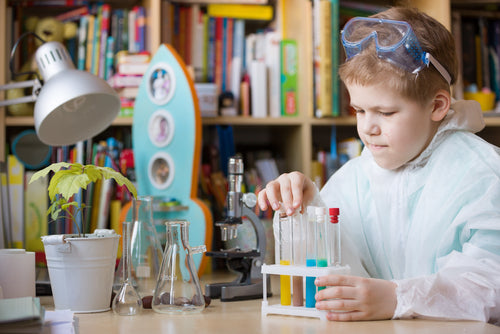
Oct 30 , 2017
Fun Water Filtration & Pollution Science Experiments for Kids
Who says playing with your water cant be fun? These awesome science experiments teach kids the importance of clean drinking water and help them understand just how natural filtration systems work. Bonus points: They will also help grown-ups discover just how many unwanted pollutants and extras are in their drinking water! These water experiments are appropriate for kids aged 10 and up and can be used during science class or fun experimentation at home.
DIY Water Filter Experiment
Teaching kids how vital water is to agriculture is an important aspect of education and one that will help youngsters understand just how essential H2O is to a healthy environment. This experiment, courtesy of a schoolteacher turned homeschooling mom, not only illustrates the importance of clean water for crops but also shows how easily drinking water can become contaminated.
What You Need:
·Two glass jars
·Sand
·Gravel
·Three coffee filters
·Dirty water
·A plastic cup with a hole cut into the bottom
The Experiment:
·Fill one jar with dirty water from a puddle, stream, or lake. Line the bottom of the plastic cup with coffee filters and place a layer of sand and gravel on top. Place the cup into an empty jar and pour the dirty water into the cup. The gravel and sand act as a natural filter, demonstrating how it purifies the water.
Clean Water Testing Experiment
Kids who have always had clean drinking water are probably unaware just how many contaminants exist in their water. This experiment is designed to show how water from different sources can have different properties and pollutants. By using a professional water testing kit, kids can easily identify impurities and chemicals in different kinds of water.
What You Need:
·Three glass jars or cups
·8 ounces purified water
·8 ounces tap water
·8 ounces fresh water from a natural source
The Experiment:
·Fill each glass jar or cup with water from a different source. Fill one with water from the tap, one with bottled or purified water, and one with water from a stream, lake, or puddle. Use the water test strips to test each one and have kids measure and record pH levels as well as the concentration of chlorine, nitrites, and ions.
Dirty Water Experiment
This ones a good choice for parents and teachers who want to demonstrate to students just how detrimental dirty water can be to the planet. The goal is to dirty up some perfectly fine drinking water and then pollute it with trash and other contaminants, exposing how polluting oceans, streams, and other sources of water can be nearly impossible to correct. A teacher turned stay-at-home-mom developed the experiment to teach her kids that even if the water looks clean, it may actually be dirty.
What You Need:
·A tub or bucket filled with water
·Assorted garbage, like empty containers and wrappers
·Dirt, leaves, and debris
·1 tablespoon of oil
The Experiment:
·Toss the trash, dirt, debris, and oil into the bucket of clean water and let it sit for a day or two. Ask kids to remove all of the items using tongs, spoons, or their hands. After the tub is clean, with only dirty water remaining, you can use a homemade water filter (like the one above) or water test strips to illustrate to children that just because water appears clean doesnt mean it actually is!
Plant Water Experiment
You already know that healthy plant and tree growth is essential to a clean water supply, and this experiment illustrates it perfectly to kids and adults alike. Essentially, a soil erosion experiment can show first-hand how foliage and plant roots can naturally filter water, which winds up in our streams, lakes, rivers, and drinking water.
What You Need:
·Three 2-liter soda bottles
·Potting soil
·Seedlings
·Leaves and vegetal waste
·Water
The Experiment:
·Cut each soda bottle lengthwise and remove the bottom of the bottle, which will act as a cup to collect runoff water. In the first bottle, place potting soil. In the second bottle, place seedlings for the plant of your choice. In the third bottle, place leaves and vegetal waste. Hang the bottom portion of the bottle around the top of the bottle to collect water. Water all three containers every day, recording the difference in color quality in each containers water excess.


